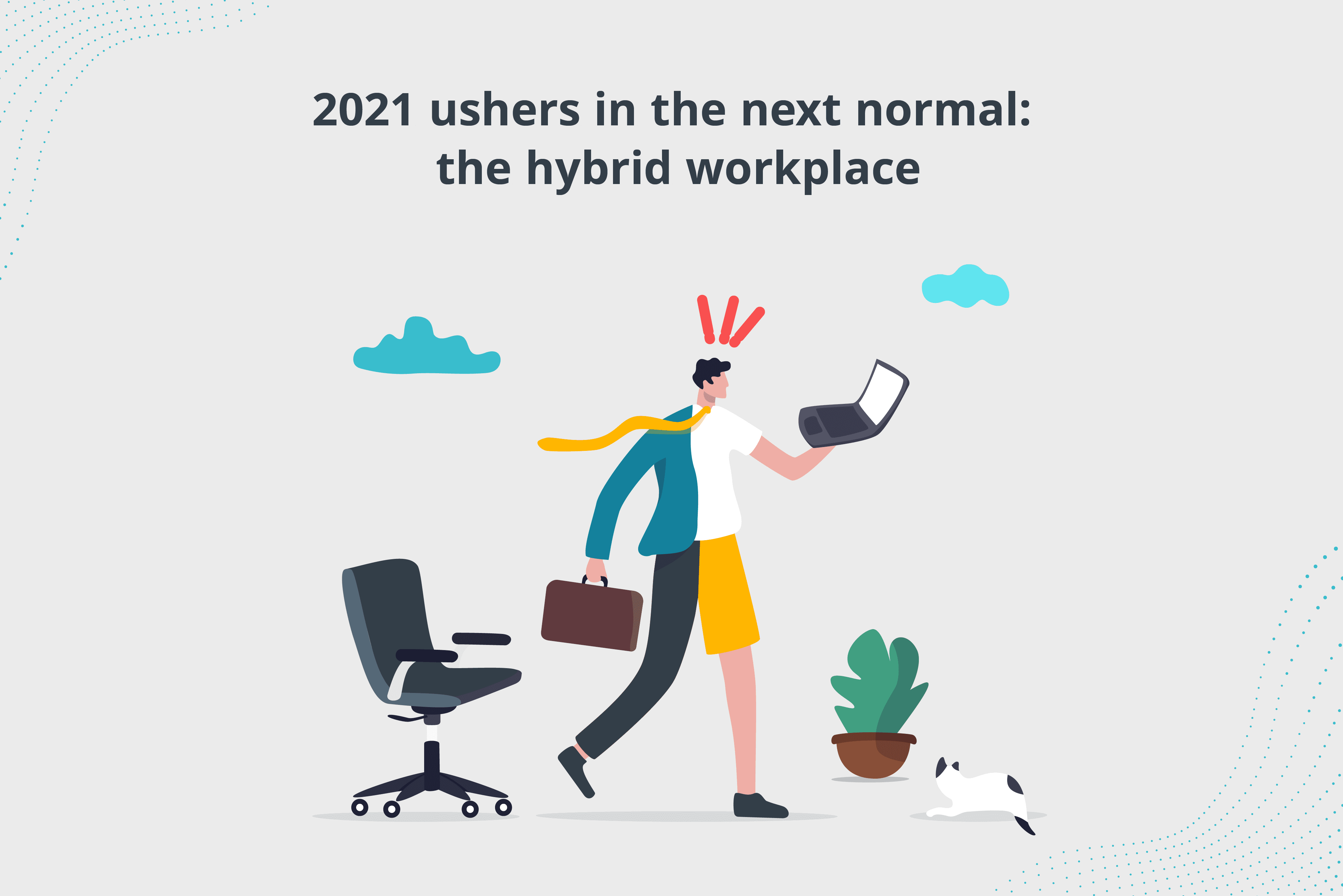We all know the story—we’re living it. Last year, the pandemic forced all but essential businesses to enable work-from-home practically overnight. More than a year and half later into this worldwide “proof of concept” for the viability of remote work, the verdict is that it’s an unqualified success.
Our collective questions about declines in productivity, professionalism and changes in processes have been answered. Remote employees have proven to be just as productive and trustworthy as in-office workers in conducting business and making decisions. Remote workforces have enabled businesses to not only function but compete effectively despite extraordinary circumstances.
The work-from-home stigma is finally gone, and researchers say we’re gearing up to transition to the next normal—a hybrid workplace that supports both remote and in-office employees.
Here is what technology analysts are saying:
- A mix of in-office and remote work is the future, according to Metrigy’s Workplace Collaboration: 2021-22 Research Study of 476 different-sized businesses across a range of industries. “Going forward, 21.4 percent of participating organizations expect to require in-office work, either full-time or part-time, while 36.4 percent will give employees the choice of continuing to work from home, working in an office, or splitting time between each,” writes Irwin Lazar, Metrigy’s President and Principal Analyst.
- The future workplace is hybrid. IDC predicts only a third of employees will work on site full time while most will be able to choose from a mix of home and office or being fully remote.
- Hybrid teams are shaping the future of work. Frost & Sullivan research shows that staggered in-office schedules with fewer people on-site are here to stay.
Corporations are on board, with many already announcing their hybrid workforce strategies for 2021 and beyond:
- IBM expects 80 percent of its employees to work in a hybrid model after the pandemic; some of IBM’s 70 million square feet of office space likely will be closed.
- Microsoft is moving forward as a hybrid, modern workplace that encompasses flexible work policy, inclusive space design and innovative technology solutions. “We view working from home part of the time (less than 50 percent) as standard for most roles.”
- Salesforce used employee feedback to guide its re-opening strategy. Employees will have flexibility in how, when and where they work with three ways of working: Flex (in the office 1-3 days per week), Fully Remote, and Office-based (4-5 days per week in the office).
Benefits of hybrid work for businesses of all sizes
Many of the hybrid working benefits that these big brands are expecting are even more pronounced in small and medium businesses (SMBs). Notably:
- Increased productivity: Employees at any size business are embracing—and appreciating—a new culture with the flexibility to split their time. Flexible working arrangements allow people to be more productive and to deliver more value.
- Lower real estate costs: With some staff continuing to work remotely, less office space will be required, reducing rental costs, furniture and on-site equipment, and easing the financial constraints for startup and high-growth companies.
- Reduced upfront software and communications services costs: Deploying cloud-based productivity, collaboration and communications solutions, as well as virtual contact centers that scale on demand greatly reduces the capital SMBs need to pursue growth opportunities.
- Access to a larger talent pool: Today’s digital technologies mean that employees can live and work anywhere there is broadband access. Remote cloud-based solutions make it possible for staff to reside in any city, state or country, while still delivering talent and productivity to their employers.
- Expanded geographic footprint: Remote workforce solutions are ideal for establishing localized service and sales presence in new markets. And even when that presence isn’t needed in a specific city, town or county, the ability to hire across time zones can expand services’ hours to deliver better customer experience.
Work anywhere with cloud communications
Adopting cloud communications has been the key to business success throughout the protracted outbreak that required physical distancing from managers, co-workers and clients. Fortunately, that same solution is key to enabling a hybrid workplace that brings together remote and in-office workers in a collaborative workspace.
Cloud PBX with unified communications, team collaboration and video calling empowers employees to work anywhere—office, home or on the go. With Broadvoice, b-hive, for example, your team can use their desktop or mobile app to:
- See who’s available, busy or away with presence indicators
- Make and take phone and video calls
- Chat one on one or in groups in real-time
- Text via SMS-enabled numbers from their Communicator app
- Host audio and video meetings
- Share presentations and applications with screen sharing
- Bring advanced phone features to Microsoft Teams
- Integrate with Salesforce CRM for screen pops and click to call
- More!
The experience is seamless from office to home and in between. And, because b-hive is in the cloud, the experience is also continuous. Geo-redundant data centers mean your communications system is always accessible from any internet connection even if your office is not.
Are you ready to be the next hybrid workplace success story?
Contact a Broadvoice communications specialist today!










